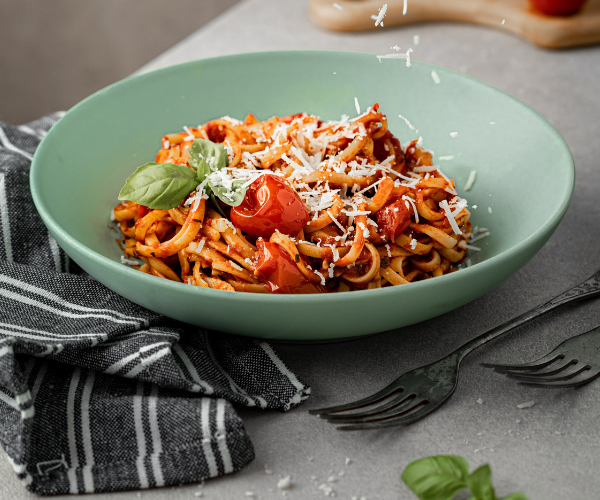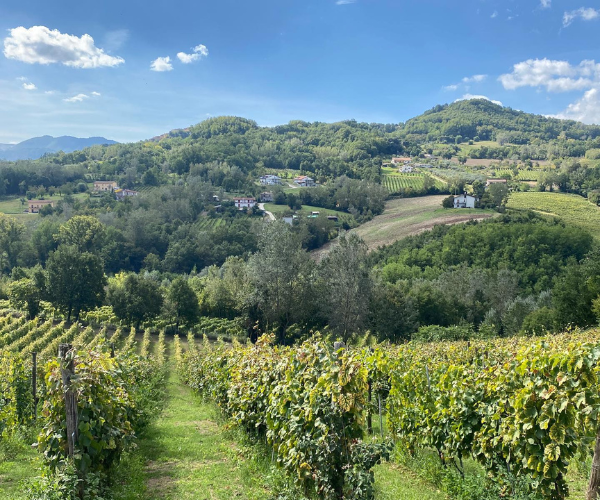

AGLIANICO, THE “BAROLO OF THE SOUTH”
MONDAY 24TH OCTOBER 2022 | BY RODRIGO MAMMANA, STORES GENERAL MANAGER
Italy has more grape varieties than any other country, and hundreds of those are used for wine production. There is a lot of discussion about the exact number, and the most conservative ones admit that more than 370 grape varieties in Italy are native to that country (this is more than Greece, Spain and France combined!) Many of the Italian native varieties have Greek origin, imported centuries ago by Roman soldiers, Greek colonists and traders.
Campania, the volcanic region in the south of Italy, is home to several native grape varieties, reds and whites. While white grapes like Falanghina, Greco and Fiano produce fresh and light wines perfect for the local seafood and sunny days, on the red grapes side, the powerful Aglianico reigns with sovereignty. Considered one of the best red grapes in Italy (and one of the oldest too), Aglianico has the potential to produce powerful wines with great quality and complexity, and the best wines are on a par with those made with Nebbiolo or Sangiovese. The reputation of Aglianico goes back to Roman times, when it was part of the blend of famous wines from that time, like falernum. This noble grape is found not only in Campania but also in Basilicata, Abruzzo, Puglia, Molise and Lazio.
For a long time, the theory that Aglianico has Greek origins was generally accepted, stating that the name comes from “Ellanico”, and when Campania was under the rule of the Bourbon family, the name was changed to Aglianico (however, new theories say that Aglianico’s origins are Spanish, not Greek). There is no conclusion, so the origin of Aglianico is still unclear.
Aglianico is a late-harvest and thick-skinned grape variety which ripens very slowly, sometimes being harvested in November. Due to its strong tannins and high acidity, the grape must be fully ripe to achieve balance, hence the need for sunny and hot areas in which to grow. The most reputable appellations for Aglianico are Taurasi in Campania and Vulture in Basilicata. However, Aglianico is attracting attention around the world, notably in Australia and California. In Taurasi, producers are allowed to add 15% of other grapes, and usually, their choice is Piedrosso, a grape that brings freshness and perfume. In Puglia, they usually blend Aglianico with Primitivo, producing fruity and lighter wines, while in the Aglianico del Vulture the wines must have 100% Aglianico grapes.
Due to its tannic structure and floral notes, many people compare Aglianico to Nebbiolo, sometimes calling the former “the Barolo of the south”. The comparison is valid, and the best expressions of wines from Aglianico have as outstanding ageing potential as their cousins in Piedmont, and can easily be kept in cellars for decades. Other peculiarities of Aglianico wines are its very high acidity and strong minerality. The similarities with Nebbiolo are also the reason for the practice in the early 20th century of shipping Aglianico wines to Northern Italy in weak vintages to improve the structure of the wines from Piedmont (the same process that used to happen in Bordeaux with Syrah grapes from the Northern Rhone).


Aglianico and Food
The intensity and power of the big Aglianico wines like Taurasi or Vulture ask for more intense dishes as well. The high alcoholic content, firm tannins and ripe fruit will run over more delicate flavours like chicken or vegetarian food. The spicy and full-of-flavour charcuterie from the South of Italy are excellent options to accompany those wines, and the fashionable (and hot) 'Nduja is a perfect choice: this fashionable Calabrian pork sausage made with roasted chilli peppers doesn’t leave much space for lighter wines, but with a good Aglianico they walk side by side in harmony.
Another great dish that can bring an unforgettable gastronomic experience is the Neapolitan Ragu. Unlike its North-Eastern popular cousin from Bologna which slow-cooks small pieces of meat with tomato sauce, the version from the south is made with a full piece of meat. The ingredients interact beautifully after simmering for hours, creating a delicious explosion of flavours perfect for a Taurasi. The meat is then removed from the sauce, which will be used to dress Maccheroni or Ziti (a local pasta shaped like narrow tubes), and the meat is served as the second course. Despite the length of preparation, Neapolitan Ragu is easy to make and doesn’t require too much supervision. Choose a heavy casserole large enough to comfortably accommodate a 1-kg piece of beef or pork, prick with a knife and put small cubes of Pancetta inside and brown in a little oil. Remove the meat and sauté diced onion, carrot and celery and return the meat to the pan. Add salt, pepper and around 100ml of red wine, 1tbsp of tomato puree and bring to boil. Now, you just need to add one can of peeled tomatoes, and 300 ml of beef stock, reduce the flame to the minimum and slowly simmer for at least 3 hours.
Bring out your Taurasi from the cellar and enjoy your delicious Neapolitan meal!


Donnachiara Taurasi DOCG 2015
Located in the Avellino Province, Donnachiara produces wines that express the pure identity of Campania’s terroir. Under the supervision of Ricardo Cotarella, one of the most respected oenologists in Italy, Donnachiara Taurasi 2015 represents the pure expression of a classic Aglianico from Campania. A very hot and dry year, 2015 produced tough wines if drunk young, but seven years of ageing softened the tannins, resulting in a rich and well-balanced wine. With pronounced aromas of blackberries and earthy notes, the wine is starting to develop tertiary flavours adding even more complexity. With a long finish and crisp acidity, this full-bodied wine is a textbook of what a classic Taurasi should be. It can be drunk now, but it will improve even more with a few years in the bottle.


